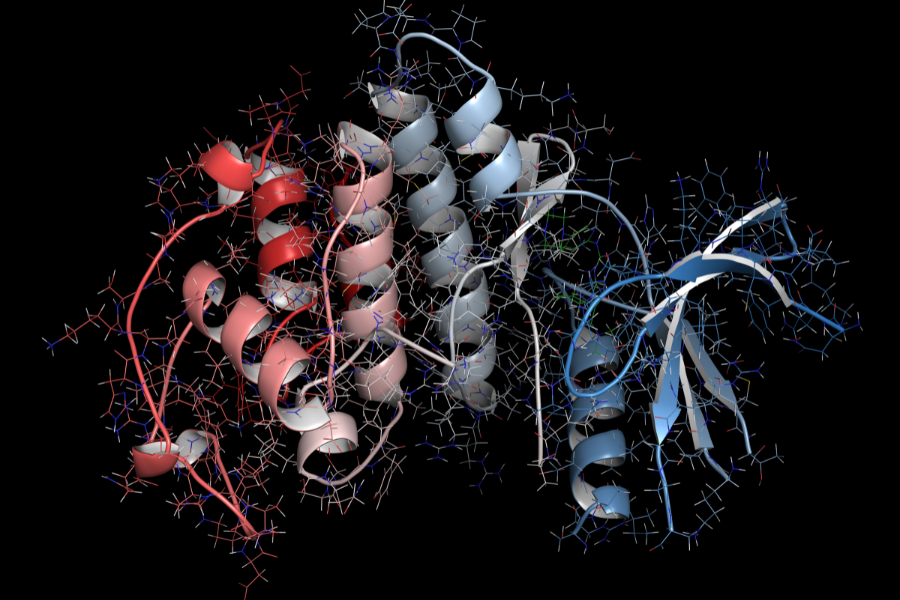What we Love About Fasoracetam
Fasoracetam is not a peptide but is a Racetam nootropic that acts on the GABA (calming) receptors of the brain. It has been used anecdotally by some to help reduce use of medications like Valium and Xanax. Some studies show that it may help restore the GABA receptors in the brain. For this reason, we want to acknowledge it’s use case in Longevity.
Overview
In our rapidly advancing world, the need for optimal cognitive performance piques the interest of many. Fasoracetam is considered one of the top cognitive enhancers globally and is highly effective in treating ADHD symptoms like lack of focus and mental fatigue.
Although it is not as well-known as other cognitive enhancers, its use is on the rise. There are more and more discussions about this nootropic on blogs and forums dedicated to biohacking. Unfortunately, thorough information on Fasoracetam is still hard to come by. Let’s take a look at everything that we have so far about this interesting peptide.
What Is Fasoracetam?
Fasoracetam is the newest addition to the racetam family of nootropics and is currently being developed as a potential non-stimulant treatment for ADHD. It was initially developed in the 1990s by the Japanese pharmaceutical company Nippon Shinyaku as a potential treatment for vascular dementia. After disappointing clinical trial results, development was halted. However, in 2016 clinical trials resumed focusing on its potential to treat ADHD in children with a specific mutation in the glutamate receptor system. These studies revealed that Fasoracetam could be an effective non-stimulant substitute for Adderall and other ADHD medications containing amphetamines.
The US Food and Drug Administration (FDA) accepted Fasoracetam into its Investigational New Drug program, allowing developers to begin human clinical trials and transport the drug across state lines. A phase 2 proof-of-concept trial was planned for 2018 to explore Fasoracetam’s potential as a treatment for autism spectrum disorder (ASD). Despite its promising potential, Fasoracetam has not been officially approved for any use by the FDA and remains classified as a research chemical not intended for human consumption.
Mechanism of Action
Fasoracetam is a member of a family of racemic drugs that are well-known for their capacity to influence the neurotransmitter systems in the brain. Specifically, Fasoracetam is believed to exert its effects by interacting with the cholinergic and glutamatergic systems, which play crucial roles in regulating cognitive function, memory, and learning.
One of the main mechanisms of action of Fasoracetam is its modulation of the cholinergic system. Acetylcholine, a neurotransmitter, is vital for cognitive processes such as attention, memory, and learning. Because Fasoracetam increases acetylcholine release in the brain, it is believed to increase cholinergic activity, which may improve memory formation and cognitive performance.
Fasoracetam interacts not only with the cholinergic system but also with the glutamatergic system. Glutamate, the major excitatory neurotransmitter in the brain, is critical for synaptic plasticity, learning, and memory. Fasoracetam is believed to modulate glutamatergic receptors, specifically metabotropic glutamate receptors (mGluR). By modulating these receptors, Fasoracetam may influence synaptic plasticity and neuronal communication, thereby enhancing cognitive function. Additionally, Fasoracetam has been shown to have an affinity for the gamma-aminobutyric acid (GABA) system. GABA, the major inhibitory neurotransmitter in the brain, regulates neuronal excitability. It is believed that Fasoracetam affects GABA receptors, possibly bringing neural activity into balance.
Benefits of Fasoracetam
There isn’t much information on Fasoracetam that is readily available to the public. There aren’t many studies on humans and very few on animals. Fasoracetam is becoming more well-known in the nootropic community despite this since several users have noted notable advantages.
Improves Memory
During animal trials, Fasoracetam has demonstrated efficacy in preventing or lessening experimentally induced amnesia, and memory loss. While there is no data available from similar experiments on humans, many users report significant memory improvement. Like other racetam nootropics, Fasoracetam increases the amount of acetylcholine in the brain.
Possible ADHD Treatment
Fasoracetam may be used to treat ADHD, according to one of the few human trials on the drug that are available to the public. This study involved 30 adolescents aged 12-17 years and tested Fasoracetam’s effectiveness in treating ADHD in individuals with a specific mutation within the glutamatergic gene system, a mutation strongly associated with ADHD and found in a large percentage of affected adolescents.
Participants who received Fasoracetam for five weeks showed significant improvement in clinical measures throughout the trial. Post-trial testing indicated that ADHD symptoms remained reduced. Additionally, none of the participants developed dependence or tolerance, suggesting that Fasoracetam could potentially be a good substitute for Adderall in certain cases.
Fights Anxiety and Depression
Fasoracetam may improve mood, reduce anxiety, and alleviate depression by acting on two of the brain’s most influential mood-regulating chemicals: glutamate and gamma-aminobutyric acid (GABA). By simultaneously up-regulating GABA, an inhibitory neurotransmitter, and suppressing the excess production of glutamate, an excitatory neurotransmitter, Fasoracetam provides users with a smooth, non-jittery sense of improved mood, relaxation, and calmness. Although there are no publicly available studies on Fasoracetam’s effect on mood, anxiety, or depression in humans, many users report feeling calmer, less anxious, and less depressed when taking it.
Side Effects of Fasoracetam
Fasoracetam is not thought to have any serious side effects. Studies involving human participants have not reported any notable adverse effects, long-term health risks, or participant dropouts due to side effects.
While side effects are rare and usually mild, some users have reported experiencing mild side effects from Fasoracetam use, including:
- Headaches
- Dizziness
- Jitters
- Anxiety
- Irritability
- Brain fog
Dosage
There are currently no established guidelines for the optimal dose of Fasoracetam due to the limited extent of human studies conducted. The dosage can vary depending on the intended use and the method of intake. Fasoracetam is highly bioavailable, with approximately 79%-97% being absorbed after oral administration. Its half-life ranges between 4 and 6 hours.
Clinical trials involving ADHD patients have used doses of 100, 200, and 400mg administered twice daily. However, users often report that a daily dose of 20mg, divided into two doses, works well for them. It is best to begin with a modest dosage and work your way up to the necessary amount until you see the desired effects.
FAQ
Can Fasoracetam improve memory?
While animal studies show memory benefits, human data is limited, although many users report memory enhancement
Is Fasoracetam a stimulant?
No, it’s a non-stimulant alternative for ADHD treatment.
Can Fasoracetam enhance focus and concentration?
Some users experience improved focus, but individual responses vary.
How long does it take for Fasoracetam to work?
Effects may be noticeable within an hour, but full benefits may take longer.
Is Fasoracetam addictive?
No evidence suggests addiction potential but use responsibly.
Get Started, Book a Free Consultation
Book a free 20-minute consultation to learn more about how this peptide can help you.




